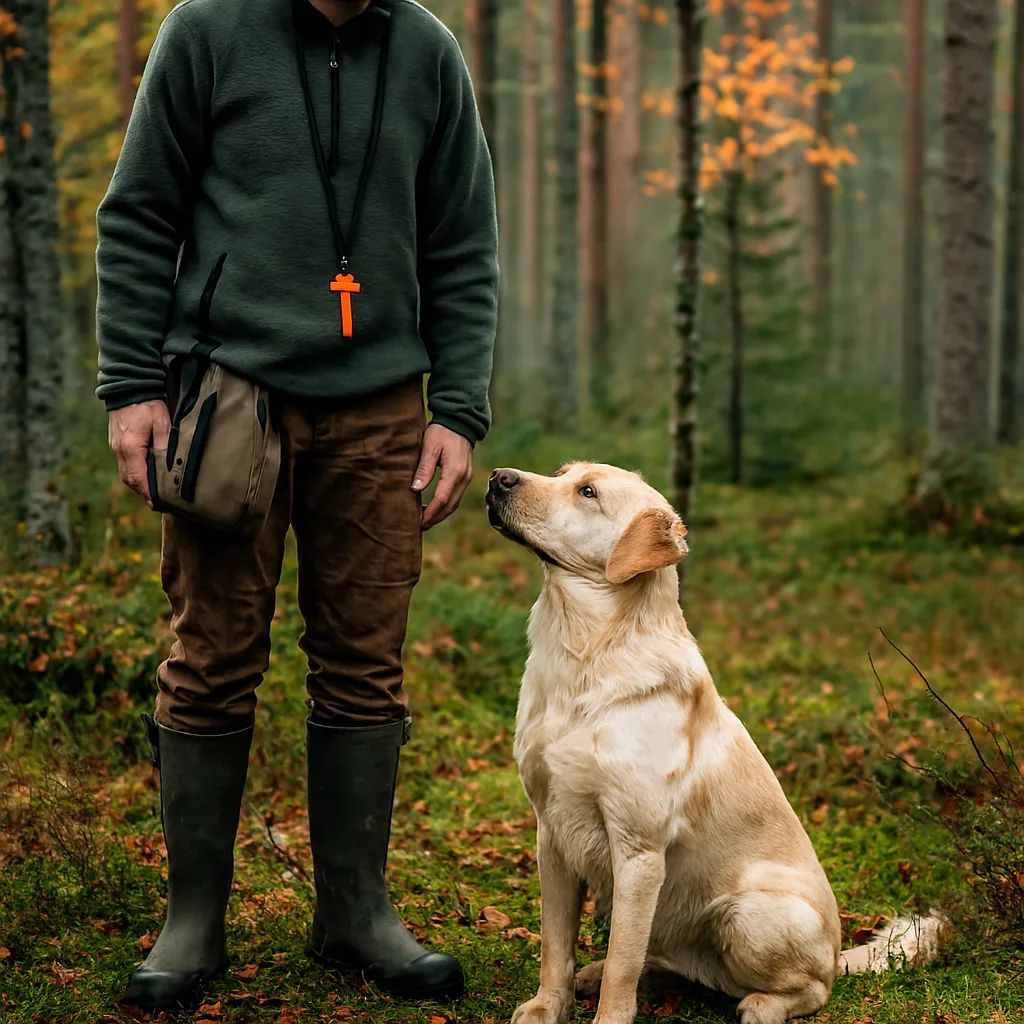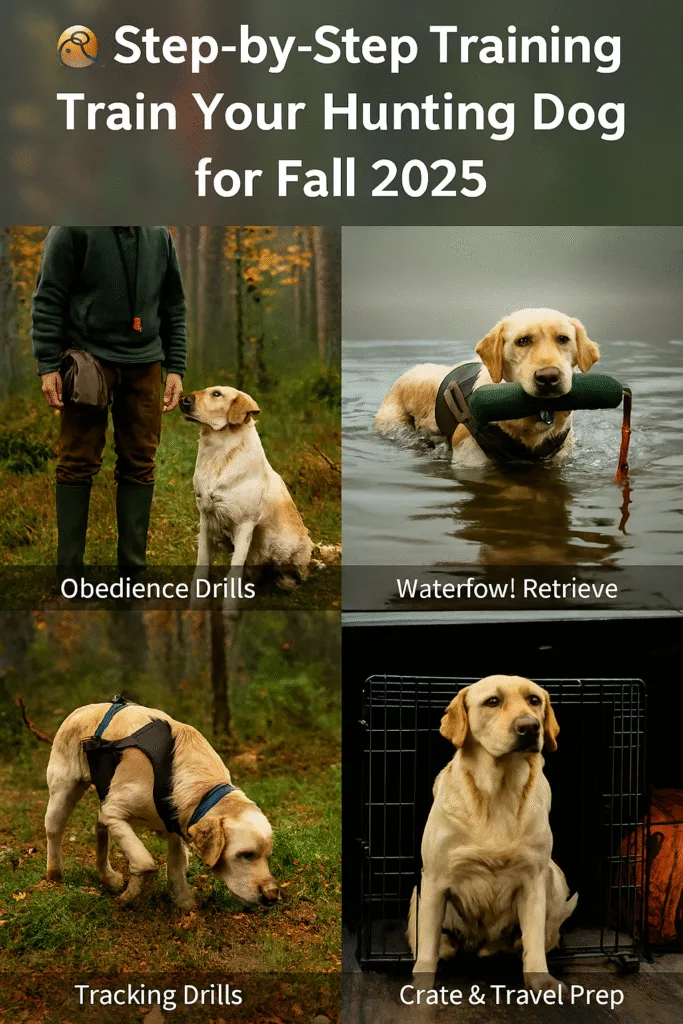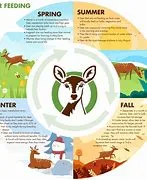Build obedience, endurance, and field instincts for upland, waterfowl, big game success and Train Your Hunting Dog for Fall 2025

🧭 Why Fall 2025 Is the Best Season to Train Your Hunting Dog
Fall offers ideal conditions for dog training: cooler temperatures, active game movement, and fewer distractions. Whether you’re prepping a pup for its first duck blind or refining a seasoned retriever’s tracking skills, Canadian terrain demands specific conditioning and obedience.
According to Ontario OUT of DOORS, fall is the most productive season for developing versatile hunting dogs that can point, retrieve, and track.
🐾 Step-by-Step Training to Train Your Hunting Dog for Fall 2025

1. 🐶 Choose the Right Breed for Your Game and Region
| Game Type | Recommended Breeds |
|---|---|
| Waterfowl | Labrador Retriever, Chesapeake Bay Retriever |
| Upland Birds | English Pointer, German Shorthaired Pointer |
| Big Game Tracking | Bluetick Coonhound, Belgian Malinois |
| Shed Hunting | Pudelpointer, Golden Retriever |
Blackfoot Kennels specializes in training versatile hunting dogs for Canadian conditions.
2. 🏠 Build Obedience with Daily Drills – Train Your Hunting Dog for Fall 2025
- Short sessions (10–15 minutes)
- High-value treats and praise
- Whistle commands for distance control
- Practice in low-distraction areas before field exposure
🏠 Obedience Drills
- Sit, stay, heel, and recall with whistle and hand signals
- Practice in low-distraction areas before field exposure
- Use high-value treats and praise
- Introduce distance control with long leads and e-collars
3. 🦆 Water Training for Ducks and Geese
- Shallow water retrieves with floating bumpers
- Gradual increase in depth and distance
- Neoprene vests for cold-water acclimation
- Blind retrieves with scent-marked dummies
🦆 Waterfowl Training – Train Your Hunting Dog for Fall 2025
- Shallow water retrieves with floating bumpers
- Blind retrieves using scent-marked dummies
- Decoy exposure and boat entry drills
- Cold-water acclimation with neoprene vests
Gear tip: SportDOG Wetland Hunter Collar and Ruffwear Float Coat are trusted by Canadian waterfowl trainers.
4. 🐾 Tracking and Scent Work for Big Game
- Drag trails with deer hide or synthetic scent
- Blood trailing with diluted scent lines
- GPS collars for off-leash tracking
- Reinforce quiet behavior during stalks
🐾 Big Game Tracking
- Drag trails with deer hide or synthetic scent
- Blood trailing with diluted scent lines
- GPS collar training for off-leash tracking
- Reinforce silent behavior during stalks
Learn more about scent training from Gun Dog Magazine.
5. 🧳 Crate Training and Travel Conditioning
- Crate as a safe space during travel
- Loading/unloading drills from trucks and boats
- Gunfire desensitization using audio recordings
- Calm behavior reinforcement around other dogs and hunters
🧳 Travel & Crate Conditioning
- Crate as a safe space during travel and downtime
- Loading/unloading drills from trucks and boats
- Gunfire desensitization using audio recordings
- Calm behavior reinforcement around other dogs and hunters
6. 🧠 Mental Conditioning and Field Bonding
- Rotate training locations: fields, forests, wetlands
- Play-based learning: fetch, hide-and-seek, scent games
- Track progress with a journal or app
- Build trust through consistent routines
❄️ Cold-Weather Prep
- Insulated vests and paw protection
- Gradual exposure to colder conditions
- High-fat diet for energy and warmth
- Avoid prolonged exposure to icy water or snow
📅 Training Timeline – Train Your Hunting Dog for Fall 2025
| Month | Focus Areas |
|---|---|
| September | Obedience, crate training, scent intro |
| October | Water retrieves, tracking drills, field exposure |
| November | Cold-weather conditioning, live hunt simulations |
❓ Frequently Asked Questions: Train Your Hunting Dog for Fall 2025
1. What age should I start training my hunting dog?
You can begin basic obedience training as early as 8 weeks. Field-specific skills like retrieving, tracking, and scent work typically start between 4–6 months, depending on breed maturity and temperament.
2. What are the best breeds for hunting in Canadian terrain?
Popular choices include:
- Waterfowl: Labrador Retriever, Chesapeake Bay Retriever
- Upland birds: German Shorthaired Pointer, English Setter
- Big game tracking: Bluetick Coonhound, Belgian Malinois
- Versatile breeds: Pudelpointer, Wirehaired Pointing Griffon
3. Is it legal to train hunting dogs with live game in Canada?
Yes — in Ontario, for example, fenced “train and trial” facilities allow dogs to pursue live coyotes, foxes, and rabbits under regulated conditions. These facilities are controversial but legal, and firearms are prohibited inside.
4. How do I desensitize my dog to gunfire?
Start with low-volume recordings of gunshots during play or feeding. Gradually increase volume over time. Never expose a dog to live gunfire without prior conditioning.
5. What gear do I need to train a hunting dog?
Essentials include:
- Training bumpers and dummies
- Whistle and clicker
- GPS or e-collar (e.g., SportDOG WetlandHunter)
- Crate for travel and downtime
- Neoprene vest for cold-water retrieves
Explore our Hunting Dog Gear Guide above for field-tested picks.
6. Can I train my dog for multiple types of game?
Yes. Many Canadian hunters train versatile breeds to handle upland birds, waterfowl, and tracking tasks. The key is to separate training sessions by skill type and use clear, consistent commands.
7. How long does it take to fully train a hunting dog?
Most dogs require 6–12 months of consistent training to become reliable in the field. Advanced skills like blind retrieves or blood trailing may take longer, especially in rugged terrain.
8. What’s the difference between hounds and gun dogs?
- Hounds: Track running game like deer or rabbits using scent and voice
- Gun dogs: Locate, flush, and retrieve birds or small game after the shot Both require endurance, obedience, and specialized training
9. How do I prepare my dog for cold-weather hunting?
- Use insulated vests and paw protection
- Train in gradually colder conditions
- Monitor hydration and energy levels
- Avoid prolonged exposure to icy water or snow
10. Should I use a professional trainer or DIY?
DIY training is possible with patience and consistency. However, professional trainers can accelerate progress, especially for advanced tasks like blood trailing or multi-species work. Look for trainers certified by the Canadian Kennel Club or local sporting dog associations.























